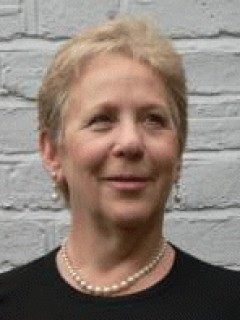Inspiration Source
First, let's start with a bit of background. The first prize was awarded in 2003, in honour of a renowed researcher whose challenging approach and alternative perspectives on business problems made him an inspiration to researchers and business leaders alike.
Ever since the Awards launch, the number — and the quality — of the entries has grown. They have changed, too. In recent years the judges have commented on the collaborative nature of the entries, with clients working hand in hand with researchers, a process that has also helped raise standards.
The reason why researchers enter is unchanged:
First and foremost, winners gain
- the respect of their peers
- a cheque for £1,500
- an engraved figure (bearing more than a passing resemblance to Prosper) of a male carrying a scroll and a pile of books, and wearing a mortar board
- And the kudos of taking part in the MRS Awards Dinner in early December.
There is good news for those who make it to the shortlist, too. In future, AQR is looking to hold a forum at which each of the three finalists will be invited to present their entry papers.
Financial Needs
The 2008 award went to one of the most interesting papers to date. Nancy MacDonald from 2CV worked with the COI's Krishan Lathigra and the Financial Services Authority's Jane Hull on a project to help the FSA understand 16-24-year-olds" financial needs and online interests, so that it could go on to create an engaging web-based resource that would enable these young adults to become more financially capable.
The FSA had already commissioned one big piece of research, measuring the financial capability of the UK, carried out with Bristol University. It had provided some good learnings in terms of where difficulties lay, but proved very objective. “We knew what they didn't know,” says Jane, “but what we wanted to do, with 2CV, was take it that step further and find out what really interested them from a subjective point of view. We needed to find out what was going to engage them, because finance is something that quite often turns young people off.”
The resulting piece of work had a number of different facets. Respondents were asked to create an online and money scrapbook — but for a "fictional character" who was "like them" in age and situation. This allowed them to distance themselves from their own immediate situations and talk more freely about issues. A compare and contrast device was also used, prompting respondents to interview other members of the family informally about their financial needs and concerns, and to reflect on the differences.
The FSA and 2CV hosted workshops in which each respondent and accompanying friend were encouraged to interact with their peers. This involved speech bubble competitions, card sorts and a timeline to identify current, past and future financial demands. They even had a "Big Brother" style diary room that they could visit at any point and talk directly to camera about their thoughts at any time. And finally, they were grouped into small teams and asked to compete to devise their own ideal financial website.
The website is now up and running and is starting to be promoted. There have been a number of events held at universities around the country and the site is being flagged up online to young people on the websites they're using already. The FSA is also looking to pick up on a lot of the useful learnings from that initial research in terms of the content of the website.
The biggest challenge, according to Nancy, was to try and anticipate the challenges with this piece of work before they went out into the field. She and her colleagues therefore designed the proposal very carefully and intuitively around potential pitfalls — and from that came the suggested techniques. Key was the amount of interactivity involved in the sessions, and the fact that respondents always felt "in charge".
The paper shows the steady evolution of this Awards scheme. In its first year it was won by a sole researcher, Luigi Toiati of Focus Research, for his work on the development of Tao Collages, a new qualitative research technique based on Eastern philosophies. Then in 2004 Bryan Urbick of CKC/KidsLink Research won first prize, with Sarah McDonald and Carolina Polo of Kellogg's, for his work on its Froot Loop cereal.
In 2005, Firefish's Bob Cook came first with his paper "Sleepless in South London", based on a range of techniques and methodologies used to research insomnia for his client, Nytol. After that, for two years in a row, Acacia Avenue stole the show.
Beyond the Ballot Box
First, in 2006, the agency's Caroline Hayter and Chloe Salmon shared the first prize with Liz Owen of Opinion Leader Research. Caroline and Chloe's submission showcased a new research model it had developed; while Liz's entry demonstrated how the Department of Health had taken democracy beyond the ballot box in creating the White Paper on healthcare outside hospitals.
One year on, Caroline was back, with Acacia Avenue's Nitasha Kapoor, winning the 2007 prize for a project with Ian Pring of London Underground.
Now we look forward to the 2009 entries. For those interested, watch out for an announcement in mid-summer, with entries due in by early autumn, and the Award presented in early December.


